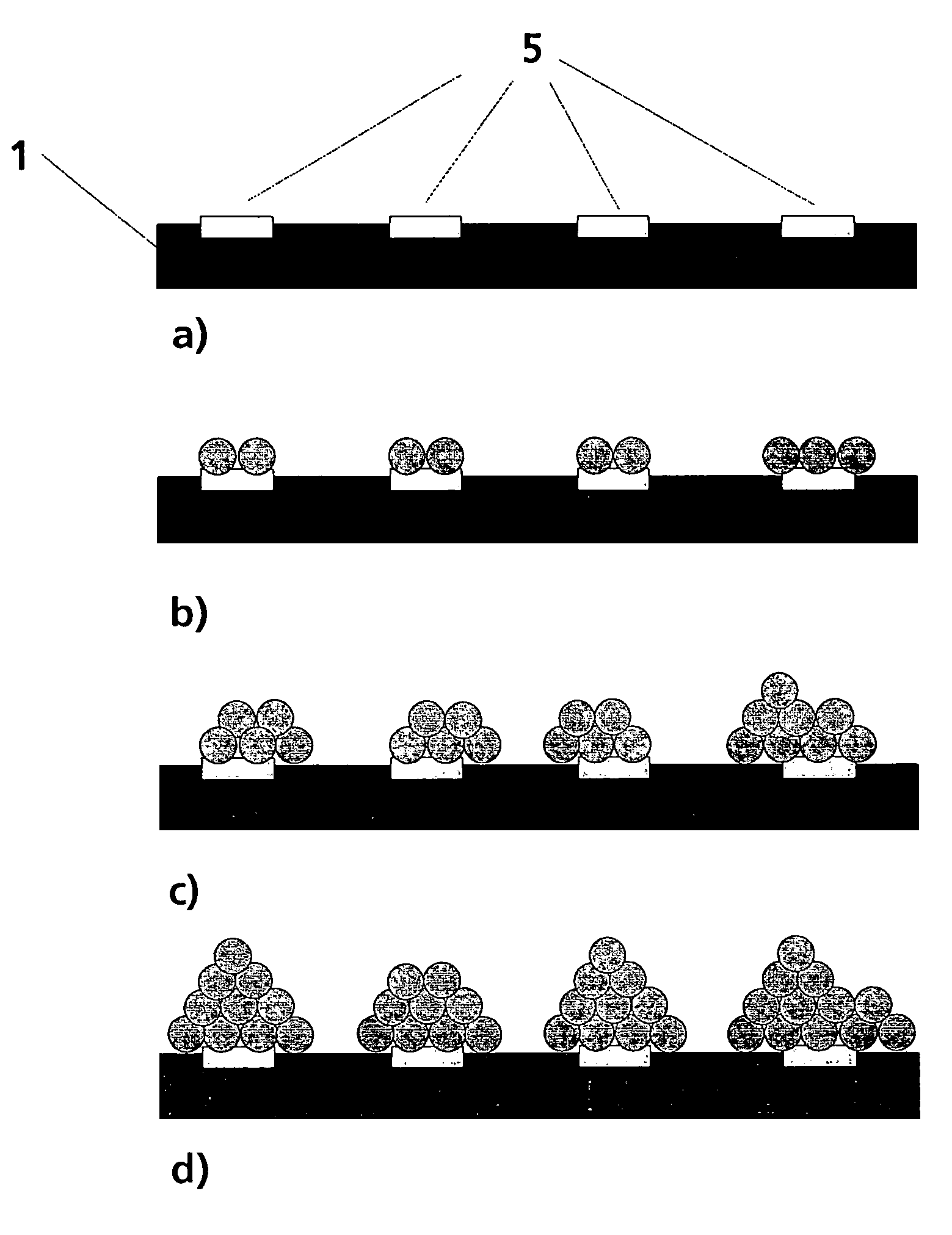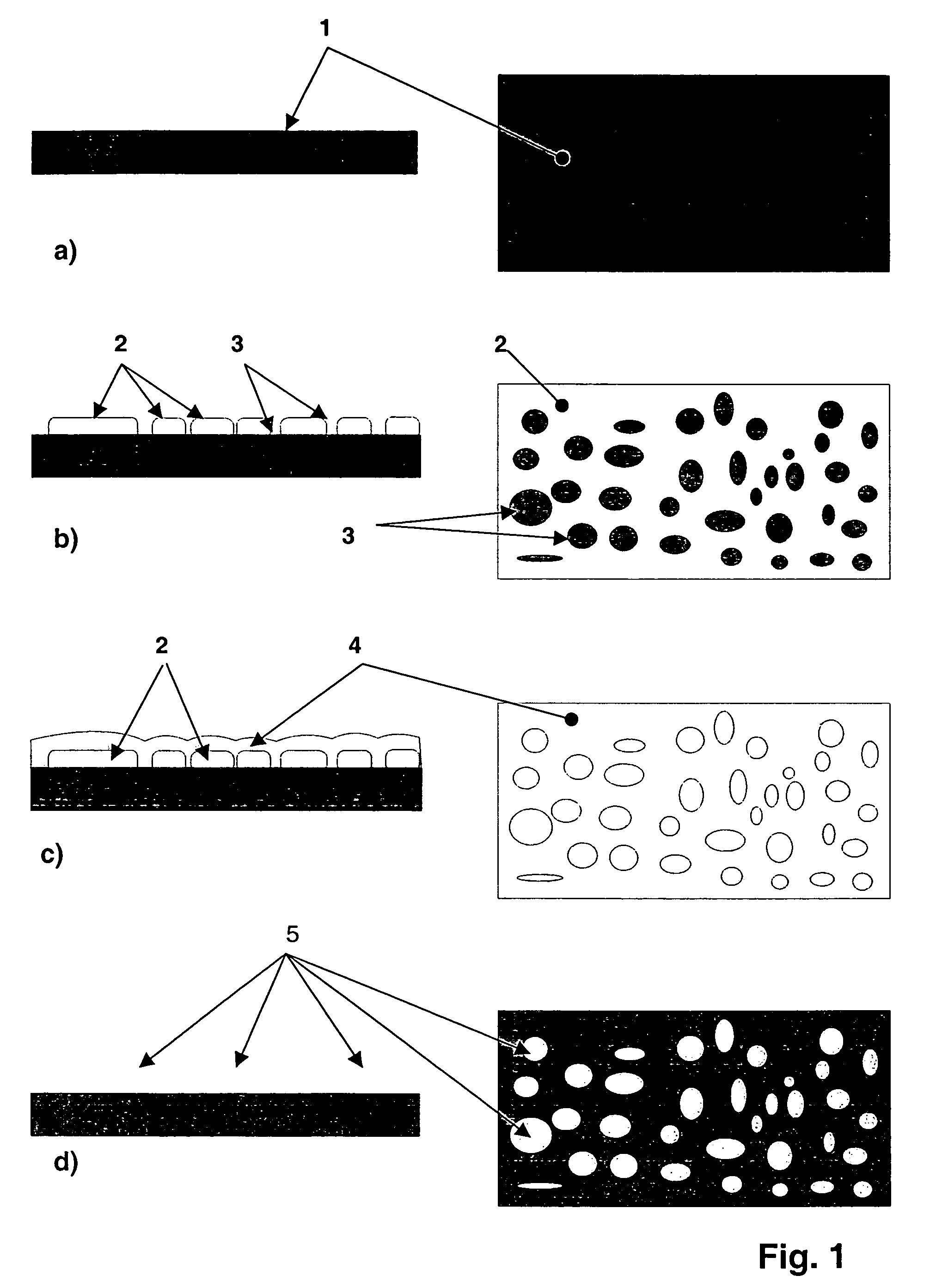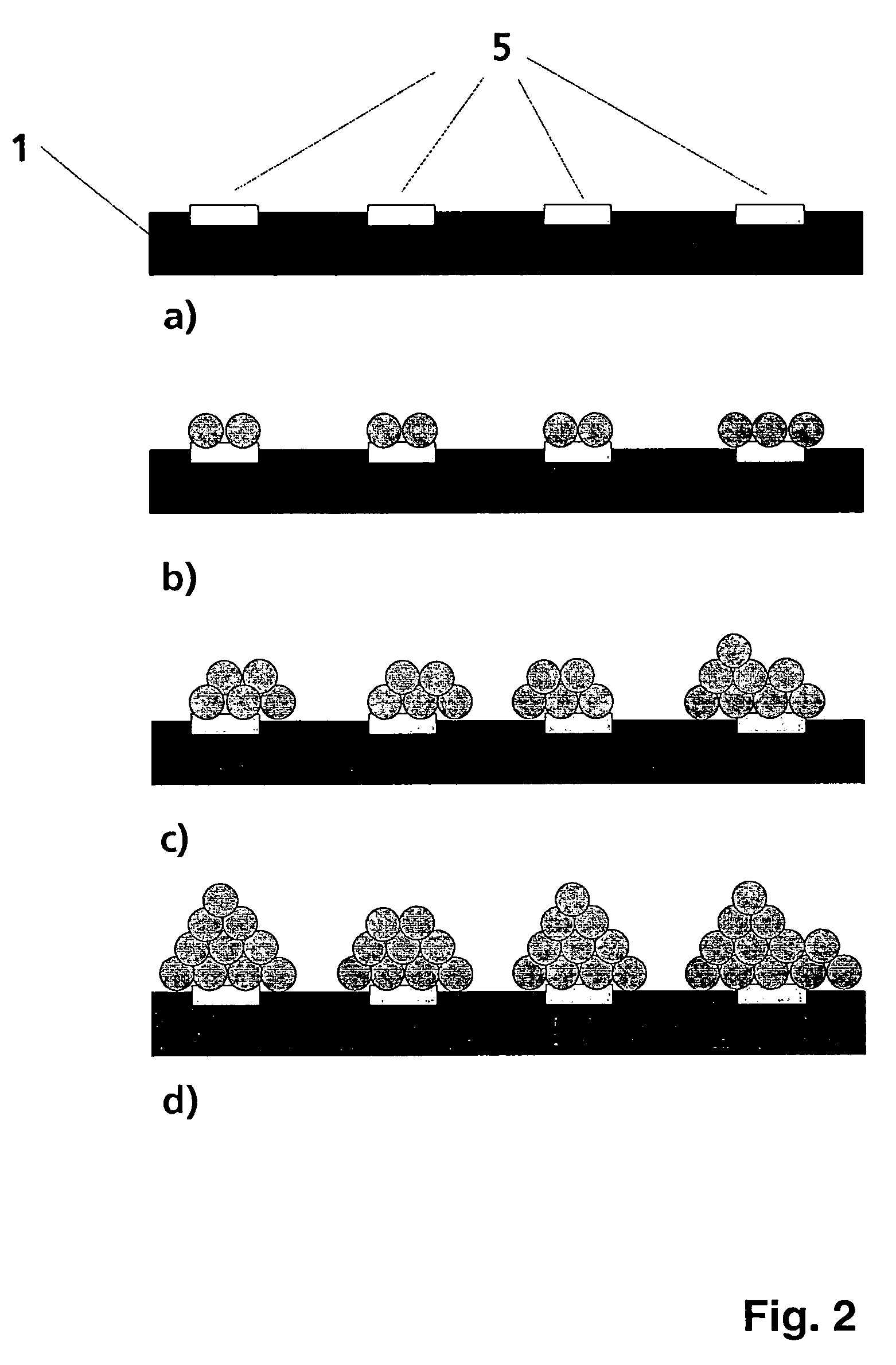Method for producing a tool which can be used to create surface structures in the sub-mum range
- Summary
- Abstract
- Description
- Claims
- Application Information
AI Technical Summary
Benefits of technology
Problems solved by technology
Method used
Image
Examples
Embodiment Construction
[0025]FIGS. 1a) to d) show on the left a lateral view and on the right a top view of the respective steps of the method. FIG. 1 a depicts a lateral and a top view of the support of a tool, with a support surface 1 which is to be selectively coated. In FIG. 1b), a mask 2, which is provided with a multiplicity of openings 3 where the support surface 1 is surrounded free of the material of mask 2, is placed directly on the support surface 1. The mask material 2 can, for example, comprise a photoresist, which is removed locally and selectively at the sites of openings 3 after corresponding exposure and the subsequent etching process. Depending on the manner of exposure, the openings 3 form in a specific configuration within the mask 2. A top view of FIG. 1b) shows an example of opening geometry and a corresponding configuration. The openings 3 represent dark areas on the support surface with the remaining white areas being covered by the mask material 2.
[0026]The mask 2 provided with op...
PUM
| Property | Measurement | Unit |
|---|---|---|
| Fraction | aaaaa | aaaaa |
| Fraction | aaaaa | aaaaa |
| Diameter | aaaaa | aaaaa |
Abstract
Description
Claims
Application Information
 Login to View More
Login to View More - R&D
- Intellectual Property
- Life Sciences
- Materials
- Tech Scout
- Unparalleled Data Quality
- Higher Quality Content
- 60% Fewer Hallucinations
Browse by: Latest US Patents, China's latest patents, Technical Efficacy Thesaurus, Application Domain, Technology Topic, Popular Technical Reports.
© 2025 PatSnap. All rights reserved.Legal|Privacy policy|Modern Slavery Act Transparency Statement|Sitemap|About US| Contact US: help@patsnap.com



